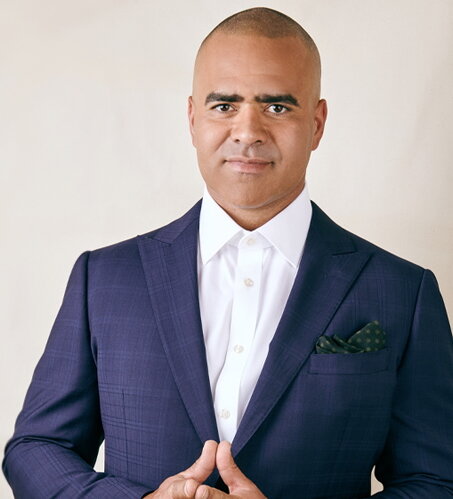The Show Goes On: How Texas Performing Arts Faced The Pandemic

One year ago, on March 10, Disney’s “Aladdin” arrived in Austin to open a three week run. Magic was in the air, spirits were high, and fans were poised to see the beauty that is Broadway come to life on stage once again. Then, on March 12, 2020, following the 1 p.m. matinee, the stage went dark for Broadway in Austin — the pandemic had taken over.
Aladdin North American Tour. Photo by Deen van Meer
Now, just over a year since the curtains closed, Texas Performing Arts (TPA) is working to bring the magic back, and Executive Director Bob Bursey has had time to reflect on the unique experiences the organization has faced in his first year in the role.
TPA, like so many other establishments, faced the tough decision of cutting staff due to the abrupt halt in normal operations. For Bursey, this part of the job wasn’t easy, especially given that he hadn’t had much time to get acclimated to the position.
“We've reduced the size of our staff during the pandemic, and that's mostly been through holding vacant positions open, and we did, unfortunately, have to do some layoffs in order to get the size of the organization down to our core, critical mass that we could sustain going forward for as long as this thing lasts,” he lamented. “Those have been really painful decisions to have to make, but necessary in order to get the organization through to the other side, and that's been so hard. I think in the central Texas community, where so much of our economy and spirit of the place is tied to live arts and performance and big events — a lot of people are really hurting.”
Despite the unfortunate downsizing of their team, Bursey remains optimistic about the future, looking forward to being able to ramp up their operations once they’re able to bring back large-scale in-person events.
A production photo from Frank Wo/Men’s “Rick Said So.” Frank Wo/Men was selected for residency program created by Texas Performing Arts and Fusebox Festival. Photo by Sarah Navarrete.
“At Texas Performing Arts, like so many organizations across the country, we've been really hard hit, but we've been trying to not shut our doors and turn off our lights and work through these difficult times by finding what the opportunities are in this situation,” he explained. “So we've done a lot of work that I'm pretty proud of actually, and that includes the residencies that we've been able to provide for Austin-based artists, where we've had really incredible artists — who are sometimes under-recognized here in central Texas — we've been able to bring them into our spaces and give them financial resources and technical support to create new projects.”
For local creatives with less acclaim, one of the toughest hurdles to clear in getting work produced is making it financially viable. Bringing forth a production that fills enough seats to justify the costs is no easy task, which is often what keeps many artists from being fortunate enough to take the stage, but during the pandemic, TPA created opportunity within the obstacle.
“We've taken our presenting outside, and put up a big tent in front of Bass Concert Hall. So that's given us some great opportunities again, to support locally based artists,” Bursey said. “For a lot of them, it was the first time they had performed in six, eight, nine months when we were presenting them for small socially distanced audiences out under this tent. We're even doing other creative things inside on our stages.”
Inside, TPA took the chance to lean on its educational leg, and take a different approach to theatre and performing arts.
“So because they're not being turned over day-to-day with different productions and artists, we have an opportunity — for instance — to use our big Bass Concert Hall stage as an exhibition space for some pretty incredible hand-painted motion scenery backdrops that we own here at UT Austin that have never been displayed to the public before, and we've had a really tremendous response to that,” Bursey explained. Guests were able to be immersed in the masterworks of artists that shaped cinematic history.
The sudden change of pace has also provided time for reflection within the organization, giving Bursey and his team a chance to examine what TPA has meant to the broader community, and whether it’s done the best it could in serving the people. One of the common concerns among the performing arts community, pre-pandemic, has often been equity and inclusion. Whether in discussions of roles being accessible to non-white actors or the all-to-common appropriation of cultures while overlooking creatives in those very same communities, finding space for the “others” on stage has been the elephant in the room for performing arts — and TPA is no exception.
“That's an area that this pandemic has provided an opportunity to have a reset, and for people to take time out to look very carefully at these really significant questions of ‘who is the organization serving?’ ‘How well is it serving them and how can it be more responsive to the needs of the communities that these public institutions — like ours — are supposed to benefit?’ That's something that we are really focused on at Texas Performing Arts,” Bursey explained. “One of our big public responsibilities is to make sure that we're giving our platform — which is our stages and our organizational resources — in a way that's really equitable. We see that there are great opportunities for us going forward to make sure that we're providing resources to artists from communities that have often been underrepresented. That's just one of the areas of focus that we're going to be putting a lot of investment in, and when we start to announce our programming for the coming season, I think folks will see really strong evidence of that commitment.”
The most pressing issue for many people is the vision of “the new normal” in relation to live performances as well as to life in general. For Bursey and TPA, a cornerstone of rebuilding the experience means going with the flow.
“One thing that has become really apparent from all of the public health experts that we've been consulting with is the importance of air flow in our buildings, which is a very in-the-weeds technical issue, but it's one that theater operators and owners have learned a lot about during this time,” Bursey explained. “We've already made some pretty significant investments in those systems for our facility as part of our health and safety plan for reopening. The other thing that we've learned is that this is an evolving situation. As more vaccines become available and as the issues relating to who can get vaccines and equity around vaccine access get solved, that's going to really improve the outlook for our industry. As we get new information, we respond to it and try to plan accordingly.”
With Bass Concert Hall currently undergoing a slew of renovations, from improved air filtration to rebuilding the balcony seating, TPA aims to enchant audiences with diverse offerings of world-class performances and innovative, collaborative partnerships.
“I'm very optimistic about the future,” Bursey said. “We’ve started announcing some rescheduled performances that we think are actually going to happen going into the fall of 2021, and the response has just been tremendous. And some of the things that we've been able to do during the shutdown, we're going to carry those forward. For instance, working with Austin-based artists is going to be an important part of our platform in the future. Presenting performances in different locations. All of the practice that we've had doing outdoor performances, doing digital performances — that's going to be important going forward. I'm looking forward to keeping that momentum going.”
To learn more about events in store from Texas Performing Arts, check out their list of upcoming events.
Nick Bailey is a forward thinking journalist with a well-rounded skill set unafraid to take on topics head on. He now resides in Austin, TX and continues to create content on a daily basis.








